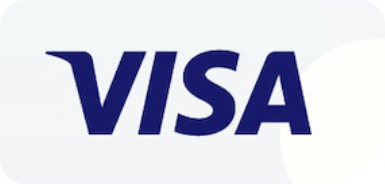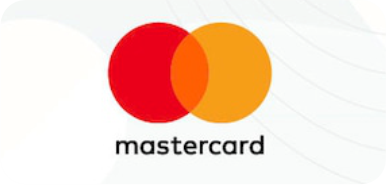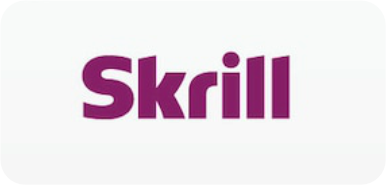If you want to master technical analysis and make better trading decisions, learning how to draw an Elliott Wave on a chart is very crucial. Elliott Wave Theory is one of the most powerful tools traders use to analyze market trends, predict price movements, and develop effective trading strategies.
In this article, you will learn how to correctly identify and draw Elliott Waves on a trading chart, ensuring that your technical analysis is accurate and actionable.
Also, Traders searching for terms like Elliott Wave charting, wave trading strategy, technical analysis with Elliott Waves, stock market wave analysis, and forex Elliott Wave pattern will find this guide helpful. By the end of this article, you will confidently recognize, label, and apply Elliott Wave patterns to improve your trading success.
What is Elliott Wave Theory?
Elliott Wave Theory, developed by Ralph Nelson Elliott in the 1930s, is a technical analysis method used to predict market cycles. It is based on the idea that financial markets move in repetitive wave patterns influenced by investor psychology.
The Basic Structure of Elliott Waves
Elliott Wave patterns consist of two phases:
- Impulse Waves (Motive Waves) – This consist of Five waves (1-2-3-4-5) that move in the direction of the main trend.
- Corrective Waves – Here there are three waves (A-B-C) that counter the main trend.
How to Identify Elliott Wave Patterns on a Chart
In order to Identify Elliot Wave Patterns on a chart, always do the following:
1. Identify the Trend Direction
To start drawing Elliott Waves, first determine whether the market is in an uptrend or downtrend. Use tools like moving averages, trendlines, and support & resistance levels to confirm the trend.
2. Spot the First Impulse Wave
Look for the first significant price movement in the trend direction. This is Wave 1 in the Elliott Wave pattern. It should be followed by a minor correction (Wave 2), confirming that the market is forming an Elliott structure.
3. Label the Waves Correctly
- Wave 1: The first upward or downward movement in the trend.
- Wave 2: A pullback that does not exceed the start of Wave 1.
- Wave 3: The strongest wave with the highest momentum.
- Wave 4: A smaller retracement, usually within 38.2% Fibonacci levels.
- Wave 5: The final wave in the impulse sequence, often creating new highs or lows.
5. Identify the Corrective Wave (A-B-C)
Once the five-wave impulse pattern is complete, look for the A-B-C correction. This phase typically retraces a portion of the previous trend before the next impulse wave starts.
How to Draw an Elliott Wave on a Chart
1. Use the Elliott Wave Drawing Tool
Most trading platforms like TradingView, MetaTrader, and ThinkorSwim offer built-in Elliott Wave tools. Select the Elliott Wave tool and start marking points on your chart.
2. Label Each Wave Accurately
- Start with Wave 1 from the lowest price point in an uptrend (or highest in a downtrend).
- Click on the next significant retracement to mark Wave 2.
- Identify and mark Wave 3, which should be the longest.
- Place Wave 4 at a moderate retracement from Wave 3.
- Complete the pattern with Wave 5, typically extending beyond Wave 3.
- Draw the A-B-C corrective waves following the impulse pattern.
3. Verify the Wave Structure with Fibonacci Retracement
Fibonacci levels (23.6%, 38.2%, 50%, 61.8%) help confirm wave retracement points. Ensure that:
- Wave 2 retraces 38.2%–61.8% of Wave 1.
- Wave 3 is the longest and strongest wave.
- Wave 4 retraces 23.6%–38.2% of Wave 3.
- Wave 5 extends beyond Wave 3.
Common Mistakes When Drawing Elliott Waves
When drawing Elliot waves, you need to recognize that they are not without mistakes. The mistakes here include:
1. Misidentifying Wave Patterns
Many traders mistakenly label random price swings as Elliott Waves. Always make sure youconfirm trends using price action and indicators like MACD and RSI.
2. Ignoring Wave Rules
- Wave 2 should never retrace beyond Wave 1’s start.
- Wave 3 should always be the longest wave.
- Wave 4 should never overlap Wave 1 in impulse waves.
3. Forcing a Wave Count
If the pattern doesn’t naturally fit the Elliott Wave structure, don’t force it. Instead, look for clearer formations on other timeframes.
Advanced Strategies Using Elliott Waves
The advanced strategies you should consider using Elliot Waves are:
1. Combining Elliott Waves with Indicators
To improve accuracy, use Elliott Waves with:
- RSI (Relative Strength Index): Helps confirm overbought/oversold conditions.
- MACD (Moving Average Convergence Divergence): Identifies momentum shifts.
- Fibonacci Retracements: Validates wave corrections.
2. Applying Elliott Waves in Different Markets
Elliott Wave Theory works in stocks, forex, crypto, and commodities. However, it is most effective in liquid markets with strong trends.
Conclusion
In conclusion, understanding how to draw an Elliott Wave on a chart is a skill that requires practice and patience. By accurately identifying wave structures and using technical tools like Fibonacci retracements, MACD, and RSI, you can make informed trading decisions.
Always validate wave counts before entering a trade and avoid forcing patterns. With consistent practice, Elliott Wave analysis can become a powerful addition to your trading strategy.
Frequently Asked Questions (FAQs)
What is the best time frame for Elliott Wave analysis?
- Elliott Waves work on all timeframes, but daily and 4-hour charts provide the most reliable patterns.
Can I use Elliott Wave for day trading?
- Yes, but it is more effective for swing trading and long-term investments due to its reliance on wave cycles.
How do I know if my Elliott Wave count is correct?
- Use Fibonacci retracements and price action confirmation. Also, ensure waves follow Elliott Wave rules.
Which software is best for drawing Elliott Waves?
- TradingView, MetaTrader 4/5, and ThinkorSwim offer excellent Elliott Wave tools.
Is Elliott Wave Theory 100% accurate?
- No. It is a probability-based strategy and works best when combined with other technical indicators.










